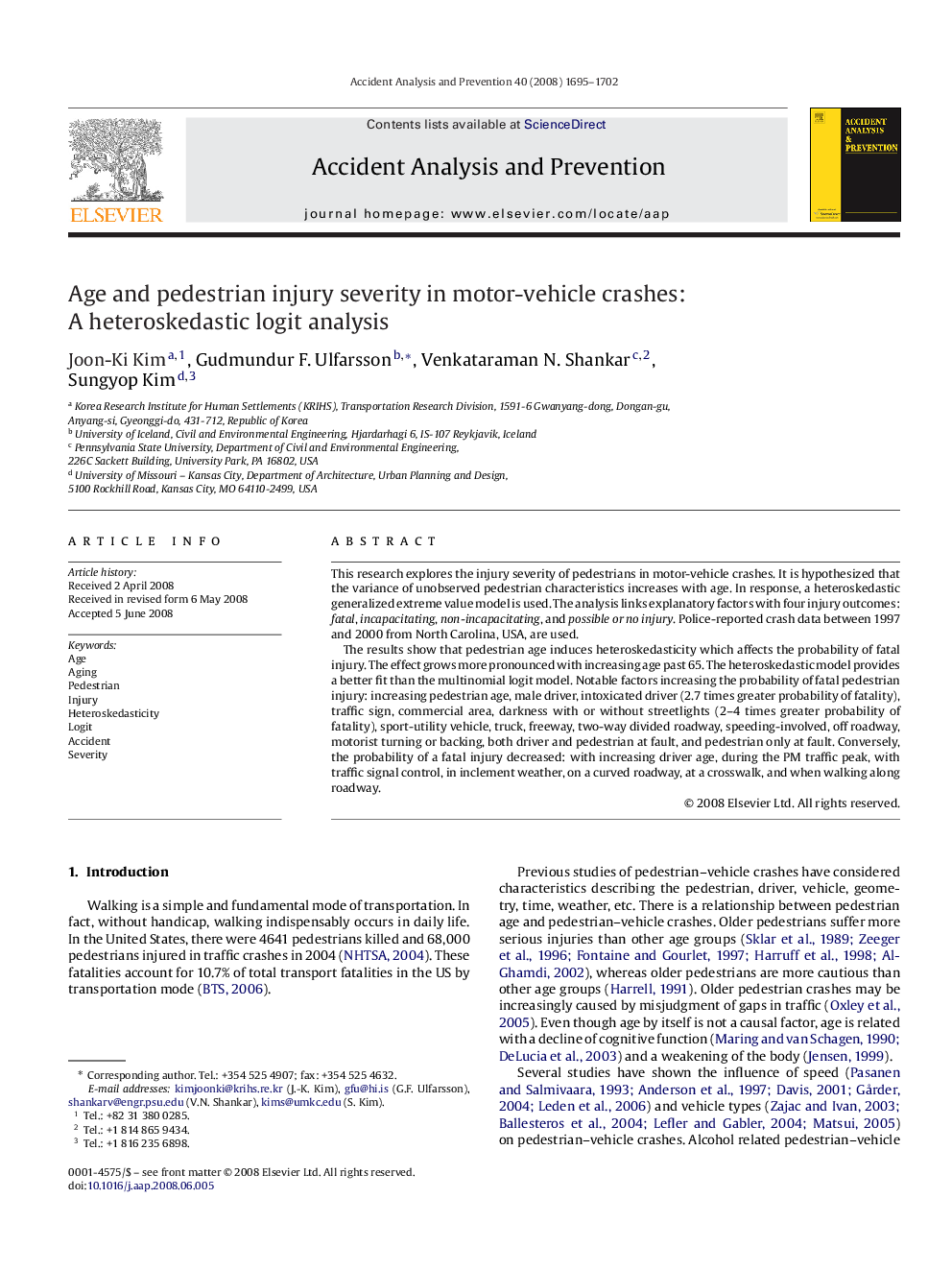| Article ID | Journal | Published Year | Pages | File Type |
|---|---|---|---|---|
| 573419 | Accident Analysis & Prevention | 2008 | 8 Pages |
This research explores the injury severity of pedestrians in motor-vehicle crashes. It is hypothesized that the variance of unobserved pedestrian characteristics increases with age. In response, a heteroskedastic generalized extreme value model is used. The analysis links explanatory factors with four injury outcomes: fatal, incapacitating, non-incapacitating, and possible or no injury. Police-reported crash data between 1997 and 2000 from North Carolina, USA, are used.The results show that pedestrian age induces heteroskedasticity which affects the probability of fatal injury. The effect grows more pronounced with increasing age past 65. The heteroskedastic model provides a better fit than the multinomial logit model. Notable factors increasing the probability of fatal pedestrian injury: increasing pedestrian age, male driver, intoxicated driver (2.7 times greater probability of fatality), traffic sign, commercial area, darkness with or without streetlights (2–4 times greater probability of fatality), sport-utility vehicle, truck, freeway, two-way divided roadway, speeding-involved, off roadway, motorist turning or backing, both driver and pedestrian at fault, and pedestrian only at fault. Conversely, the probability of a fatal injury decreased: with increasing driver age, during the PM traffic peak, with traffic signal control, in inclement weather, on a curved roadway, at a crosswalk, and when walking along roadway.
